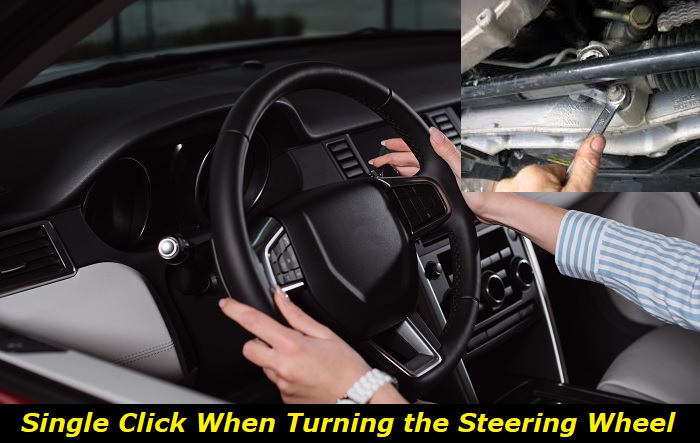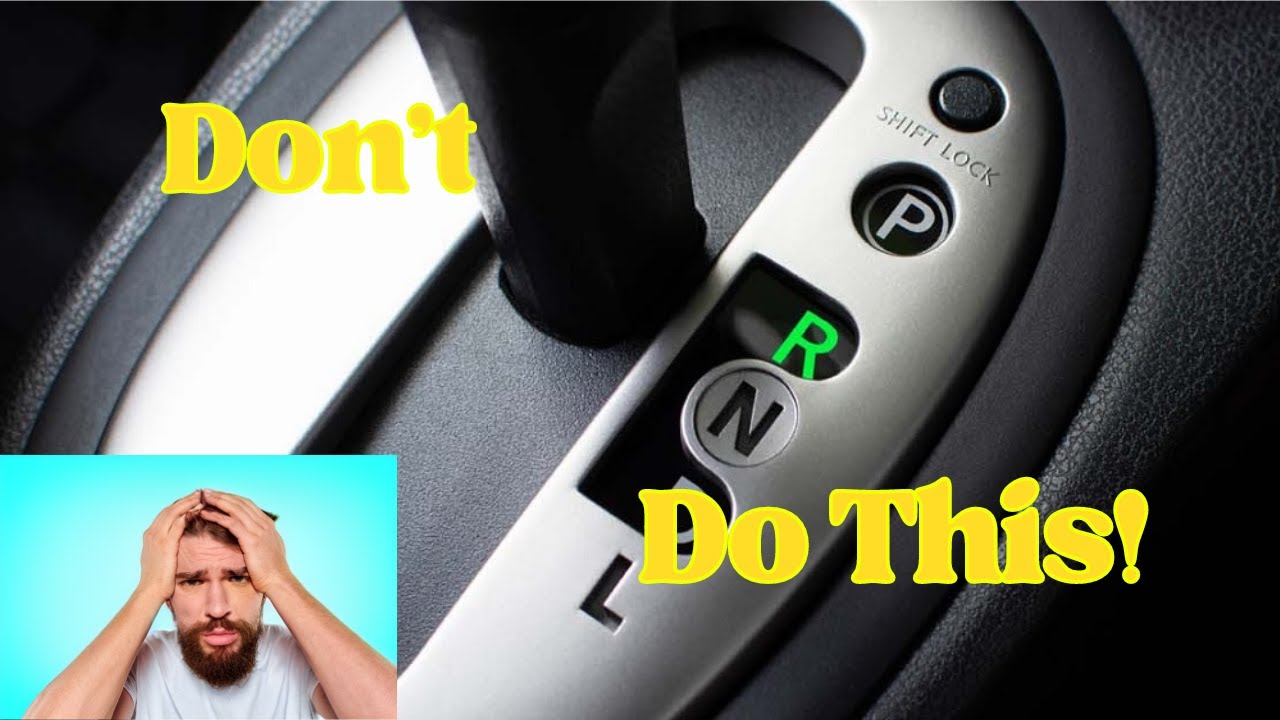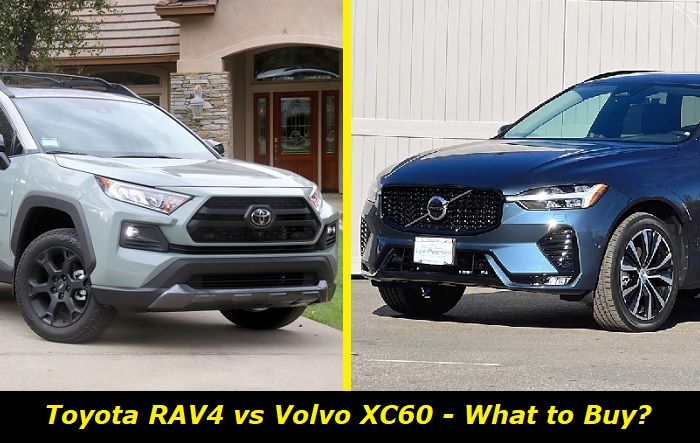Normally, steering wheels run smoothly without resistance. But you may start hearing a click while navigating a turn in some situations. Faults associated with steering wheels shouldn't be taken lightly, so the source of the annoying clicking noise should be looked for as quickly as possible.
The causes of the abnormal click that's being produced when turning your steering wheel include CV boot tearing, CV joint wear, bearing hub fault, lug nut looseness, or sway bar link breakage. The level of repair for such situations ranges from cleaning to swapping out the affected components.

We've explained each of those click-causing issues as well as how to deal with them in this detailed post. You'll know which ones would require hiring a professional and the ones that you could manage to do on your own. Maintenance tips have also been presented so that you can avoid this type of noise in the future.
Why Rotating the Steering Wheel May Be Causing Clicking
The noise is typically a sign of issues within the steering system. But it doesn't really come from the steering wheel even though it's the part that's being turned. The clicks can be produced by other components of the system.
Take quick steps to locate the source of the sound before it gets complicated and affects other parts. This is likely to happen since the steering assembly consists of many moving items joined or meeting together.
Understand that it's necessary for steering columns to flex even if they're columns. They turn and don't move directly to the steering box at angles. They also feature universal joints which can experience wear. This is particularly true on recent model-year vehicle steering systems that utilize many plastic components.
The sound should be regarded as a healthy indication that the vehicle may require a minor suspension job. But it could be another thing. Diagnoses could get tedious especially when prolonged. So our advice for you is to seek the services of a mechanic as the best option.
Above all, your safety on the road will be at risk if you continue driving with such a problem. And you know that it's not just yours, but any passenger, other road users, and your beloved car too. Now read about the various potential causes of the click below.
Causes of Clicking Sounds When Turning Your Steering
1) Defective CV Joints or Bad CV Boots
All cars have CV (constant velocity) joints that link the vehicle's axles to the wheels so that the transfer of engine power to the wheels can take place. This will ultimately facilitate the movement of your car.
CV joints require enough flexibility to let the wheels rotate without any obstruction. It also ensures good traction on rough roads or terrains.
It's the internal lubricant in the system that will aid the optimal flexibility of the joints. So wearing will occur when such a lubricant isn't adequate. Time is also a factor here. Even the CV boots can't escape the wear and tear that comes with time.
The internal lubricant protects the sensitive metal parts in CV boots. But the boots will begin to get dry when the lubricant isn't enough, bringing about metal-to-metal contact. That's when the wearing starts and possible tearing may take place.
It may become difficult to steer the vehicle if the CV joints are too flexible or loose as well. Rigidity in the CV joints will also not let their parts move well. The situation will become worse when you step on the gas pedal or when turning sharply.
Any problem with the CV joints or boots will require a change of the parts. You can rule out the CV joint or boot area with this fix. Then you can move on to other potential sources of the sound if it's still being heard
Note: Now let's look at other nearby components/areas that could be damaged and causing the clicking sound. For example; the driveshaft, wheels, tires, etc.
2) Faulty Bearing Hub
A bearing hub is an essential part of the steering system that's situated between the brake discs and the axle. This is the linking point of your car and its wheels. Axle bearing hubs are made to handle your car's weight while facilitating appropriate wheel movement at the same time.
The malfunctioning of this part makes a clicking noise when rotating the steering wheels while driving. It's a sign that the bearings are in poor condition and can't ensure proper wheel movement.
A vehicle that runs on big wheels will experience axle bearing hub failure easily. This is because the bearing hub trying to maintain the linkage of the wheels to the vehicle. Examine the bearing hub routinely to be sure that it's working well.
3) Lug Nuts Looseness
Lug nuts are important for holding your wheels in place. In other words, they're made to fasten the wheel and axle to the bearing hub. The wheel will be in its proper position and (centered correctly on the axle).
Loose lug nuts won't perform their roles effectively. This will result in the wheel's rim shifting a little, thereby producing those clicks during turns. Thankfully, it's easy to repair loosened lug nuts. Simply tighten them using a torque wrench. Most cars require drawing the lug nuts at about 80 to 90 foot-pounds.
4) Sway Bar Link Damage
Vehicle sway bars are crucial to the suspension system in the sense that they join the right and left sides of your car. They do so securely to keep both sides level when you steer. These parts feature rubber-insulated links at either end to make the sway bar's motion transfer to the control arm smooth.
The links breaking will mean that the metal part of the sway bar will be in direct contact with the control arm. This will result in disturbing clicks whenever the wheels are turned. Sway bar link wear may be brought about by rust that results from inadequate lubricant in the system or moisture (water) buildup.
You have to replace the sway bar links to fix this issue. Fortunately, you don't need to change the whole sway bar. Maybe the noise will stop with this fix and maybe not. See other tips on getting rid of the clicks (and preventing them) below.
Easy (DIY) Ways Steps To Stop or Avoid the Clicking Sound
You may be able to use the tips in this section to deal with the clicking DIY style before it drives you crazy. Keep in mind that applying a lubricant or grease isn't going to help totally. Other things need to be done for the problem to be resolved completely.
One step you can take is to clean the CV joint and swap out its grease. This may seem to involve a complex process but it doesn't. You can do it yourself if you don't mind "getting your hands dirty". But rubber safety gloves are welcome to use for the procedure if available. Read the CV cleaning steps below.
Step 1: Lift the Vehicle Up Securely
This should be done with the aid of two sturdy car jacks on both sides of the car. You'll be able to get under the vehicle safely after this to access the CV axle.
Step 2: Find the CV Axle
Locate this area under your car to pinpoint the source of the clicking noise, which usually is the defective joints. CV axles are situated between the front wheels in front-wheel cars. Their outer joints link the wheels to the axle, while the inner joints link the transmission to the axle.
Step 3: Examine the CV Joints
Look for signs of wear, tear, damage, and/or lubricant leaks on the joints or boots. You may find contaminants like dust, water/moisture, and so on in the boots or on the joints. Seeing grease on the CV joint edges indicates that there's damage.
Step 4: Swap Out the Lubricant and Clean the Joints
Doing this plus swapping out the lubricant will return the car back to its normal smooth movement. Use a small towel or rag to wipe off the grease to the best of your ability.
You can also soak the components in gasoline or kerosene for further degreasing. They're effective against grease stains. Wipe the parts well once you're done with the soaking. You may use an air compressor to blow out any traces of the solvent left.
Step 5: Replace and/or Re-grease
Replace the CV joints if they're damaged, worn out, leaky, or torn. If not, you can just proceed to re-greasing the old parts that have been put back in place. Lubricate any replacement CV joint after setting them up.
Conclusion
You may have nothing to worry about as long as the steering wheel is moving OK and isn't experiencing play. This is even with the clicking sound. However, be prepared for a costly fix if the steering wheel starts binding and/or having play. It may require you to purchase a whole replacement steering assembly.
About the authors
The CarAraC research team is composed of seasoned auto mechanics and automotive industry professionals, including individuals with advanced degrees and certifications in their field. Our team members boast prestigious credentials, reflecting their extensive knowledge and skills. These qualifications include: IMI: Institute of the Motor Industry, ASE-Certified Master Automobile Technicians; Coventry University, Graduate of MA in Automotive Journalism; Politecnico di Torino, Italy, MS Automotive Engineering; Ss. Cyril and Methodius University in Skopje, Mechanical University in Skopje; TOC Automotive College; DHA Suffa University, Department of Mechanical Engineering






Add comment